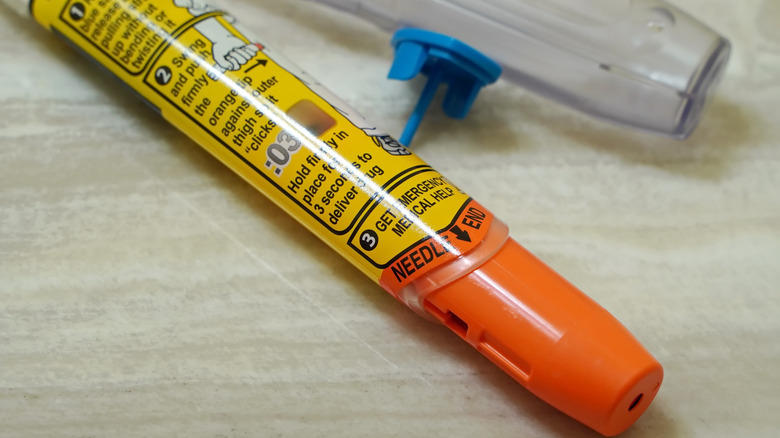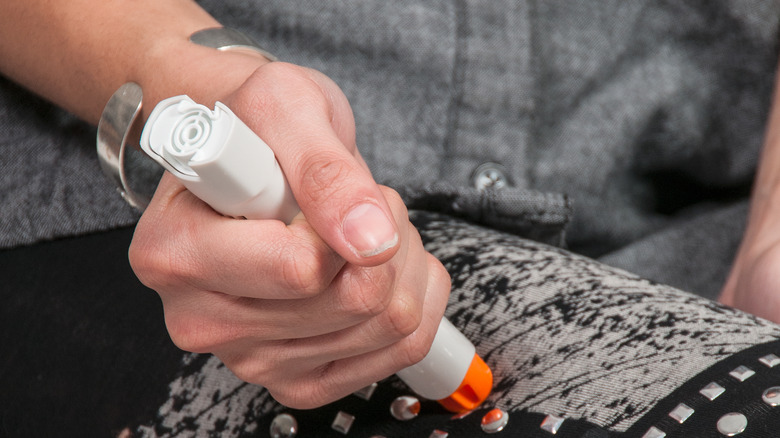How To Use An EpiPen
An EpiPen is the brand name for an auto-injectable device that delivers epinephrine deep into the muscle to delay anaphylaxis — a severe and potentially life-threatening allergic reaction. According to Healthline, anaphylaxis is typically triggered by a food allergy or an allergic reaction to an insect sting or bite, causing your immune system to overreact. While the reaction may appear mild at first, it can get progressively worse, affecting your blood pressure and even your breathing. This can cause a whole host of symptoms, depending on the person and the severity of the reaction.
Some common signs and symptoms of anaphylaxis to watch out for include hives, itching, dizziness, difficulty breathing, low blood pressure, elevated heart rate, and swelling of the throat, lips, and face. Fortunately, you can use an EpiPen to prevent this reaction (via Well+Good). That's because EpiPens work by relaxing the muscles in your body that typically swell in the event of an allergic reaction.
Carefully follow instructions
Before using an EpiPen, however, it's important to calmly and carefully read the instructions and follow directions. For instance, whether you're using it on yourself or someone else, you should make sure the recipient is sitting or lying down so they don't accidentally fall over upon injection (via Well+Good). After reading the directions and removing the EpiPen from its carrier case, you should take off the blue safety lid on the top and hold the device in your fist, jabbing the orange needle end into the side of the outer thigh. Hold it in for about 10 seconds before releasing.
After the EpiPen has been administered, call 911 or seek emergency medical care. While EpiPens can stop the onset of anaphylaxis, they can't stop or treat an allergic reaction. As a result, you will require further medical attention. Your medical provider will also need to know how much epinephrine was injected into your body. Therefore, you shouldn't throw away your EpiPen after using it.


